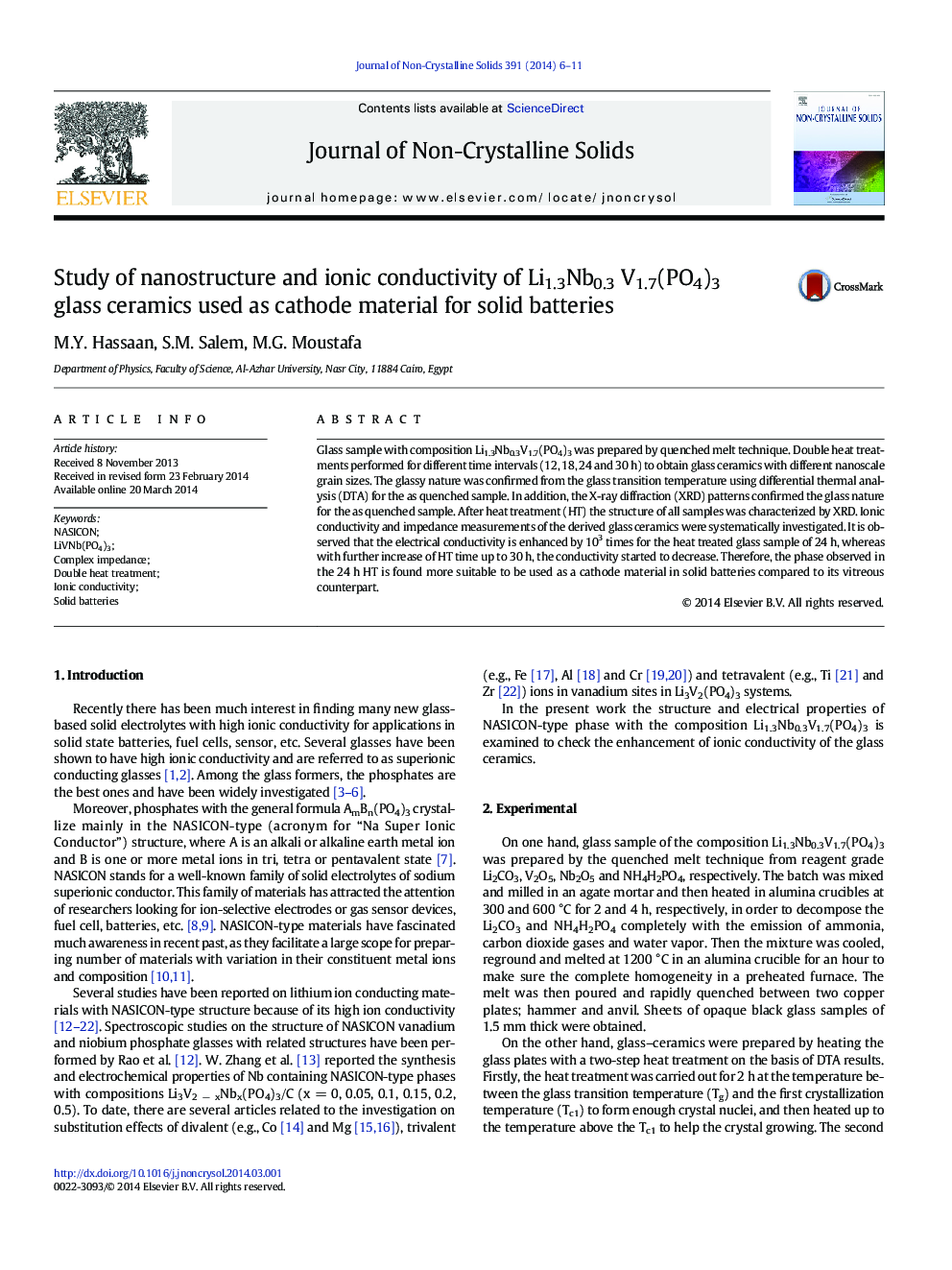| Article ID | Journal | Published Year | Pages | File Type |
|---|---|---|---|---|
| 1481038 | Journal of Non-Crystalline Solids | 2014 | 6 Pages |
•Calculated crystallite size exhibits increasing values with increasing HT time.•Density of the glass ceramic sample increased with increasing HT time.•Electrical conductivity is enhanced in the glass sample HT for 24 h.•Impedance results indicated the ionic nature of NASICON-type material.
Glass sample with composition Li1.3Nb0.3V1.7(PO4)3 was prepared by quenched melt technique. Double heat treatments performed for different time intervals (12, 18, 24 and 30 h) to obtain glass ceramics with different nanoscale grain sizes. The glassy nature was confirmed from the glass transition temperature using differential thermal analysis (DTA) for the as quenched sample. In addition, the X-ray diffraction (XRD) patterns confirmed the glass nature for the as quenched sample. After heat treatment (HT) the structure of all samples was characterized by XRD. Ionic conductivity and impedance measurements of the derived glass ceramics were systematically investigated. It is observed that the electrical conductivity is enhanced by 103 times for the heat treated glass sample of 24 h, whereas with further increase of HT time up to 30 h, the conductivity started to decrease. Therefore, the phase observed in the 24 h HT is found more suitable to be used as a cathode material in solid batteries compared to its vitreous counterpart.
